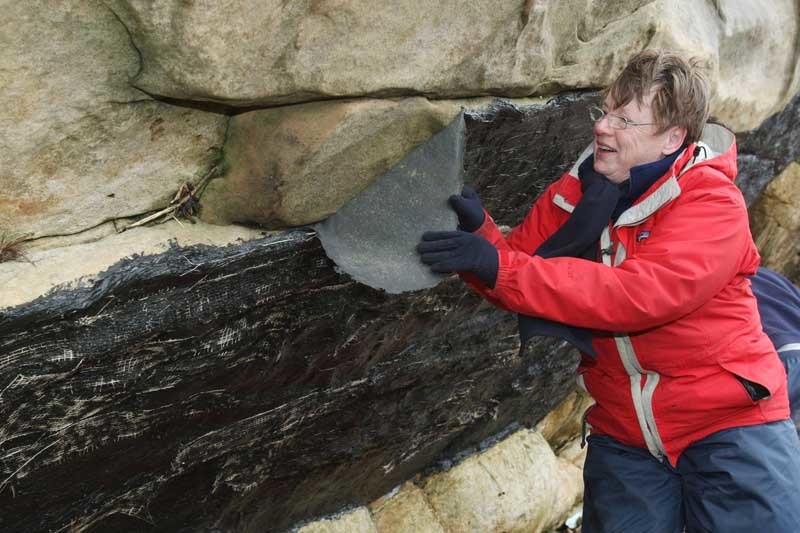Evidence of a giant scorpion which once roamed Fife has been discovered.
The internationally important fossil find indicates that the gigantic beast, which lived 330 million years ago, was about two metres long and a metre wide.
But had people been around then, it would not have been a threat, as it is believed to have been a slow, lumbering animal which fed on organic material in shallow water and swamps.
The six-legged hibbertopterus, which lived millions of years before dinosaurs appeared, at a time when Scotland was closer to the equator, is related to modern-day scorpions and horseshoe crabs.
The fossil of footprints and a trail from its long tail as it crawled over damp sand has caused excitement among geologists as it contradicts previous evidence that such eurypterids lived in water for most, if not all, of the time.
It is also the largest known walking trackway of any invertebrate animal.
A cast is being made of the sandstone fossil as it is under threat from erosion.SecretIt is also feared it could be vandalised, so its exact location in north-east Fife is being kept secret.
Scottish Natural Heritage and the Geologists’ Association are funding the preservation project, led by Geoheritage Fife.
SNH geologist Dr Colin McFadyen compared the find to that of fossilised dinosaur footprints in Skye and reptile traces in Elgin and said it will help us learn more about the impact of climate change in the past and the future.
“Helping to conserve this important find is vital for our understanding of this period in evolution,” he said.
“Fossils tell us a tremendous amount about the geology and environment.
“They are of tremendous value to research in working out where Scotland has been and they give us an idea of where we might be going in the future.
“Such finds as this highlight that all over Scotland there are no doubt other geological treasures awaiting discovery.”
Richard Batchelor, chairman of Geoheritage Fife, said the trackway is in a precarious situation, having been exposed to weathering over the years, and that the rock it is in is in danger of falling.
Removing it and housing it in a museum would be prohibitively costly but moulding it in silicone rubber and making copies for educational and research purposes means that we can still see and research this huge creature’s tracks in years to come.Rich in fossilsThe area in which the discovery was made several years ago is said to be rich in fossils, including that of a huge centipede nearby.
Dr Martin Whyte, of Sheffield University, found the hibbertopterus fossil by chance while out walking.
Initially he was astonished by its size then realised its significance when he determined what it was.
He said, “I thought it was important because it has a very marked trail, which means it must have been moving out of water.
“That meant the animal was capable of living out of water and this was the first evidence to support that suggestion.”
Reports of the discovery appeared in newspapers in 2005 after Dr Whyte, who is originally from Fife, wrote of his find.
Over the last few days Dr Dave Williams and Dr Dee Edwards, of Geo Ed, in Cornwall, commissioned by Geoheritage Fife, have been making a rubber mould which will then be used to make casts of the fossil.
It is hoped a copy will be displayed locally, perhaps in St Andrews Museum and the university.
